The Essential Role of Lifejackets in Marine Safety in Australia
The importance of a lifejacket to save lives comes into effect only when it’s worn. This key safety equipment plays a pivotal role in all water-based activities and recreational boating throughout Australia. Regrettably, a significant number of boating-related drownings nationwide involve individuals not wearing lifejackets. This undeniable reality underscores the vital importance of lifejackets in enhancing marine safety across the country.
Lifejackets: Your Lifeline on the Water
Regardless of your expertise in swimming or boating, it is important to always use lifejackets, or a Personal Flotation Device (PFD) when on the water. It’s compulsory for all vessels in Australia to have an approved lifejacket for each person on board, irrespective of whether wearing one is legally required at the time or not.
Lifejackets must be readily accessible onboard. If they are not immediately visible, their storage location should be distinctly marked with a ‘Lifejackets’ sign (red text on a white background). Complimentary stickers for this purpose are available at service centres across the region. Check with your state or territories local laws to stay compliant.

Lifejacket Regulations
in Australia
Australian lifejacket regulations depend on several factors, some include:
- The age of the user, with stringent rules for children under 12 years.
- The perceived level of risk (see below ‘different risk factors’).
- The nature of the vessel in use, different rules for different vessels.
- The geographical location – including enclosed waters, alpine waters, open waters, or crossing coastal bars.
- The time of day when boating.
Australia uses four common lifejacket classifications: Level 50, Level 50S, Level 100, and Level 150 each designed for different conditions and uses.
Different Risk Factors
Besides the general rules for various vessel types, it is mandatory to wear a lifejacket when directed by the skipper under conditions of heightened risk. This could be in response to severe weather warnings, the presence of non-swimmers, elderly passengers, or passengers with serious medical conditions. Other potential triggers include the risk of capsizing, individuals falling overboard, extreme cold-water temperatures, or vessel breakdown. Boating at night or in unfamiliar areas, overcrowding or the presence of younger people can increase risk levels requiring a lifejacket. In addition to riding on older vessels or sail boats without certain safety features such as safety barriers, lifelines, rails, safety harnesses, or jack lines, wearing a lifejacket is critical.

Learn about what Lifejacket you need based on your vessel and usage.
Selecting the appropriate personal flotation device (PFD), or lifejacket, is crucial for safety during any water-based activity or while operating or riding in various watercrafts in Australia. This choice isn’t universal; it greatly hinges on the specific activity and vessel type. Below, we outline different lifejackets tailored for varying circumstances and watercrafts, following Australia’s strict maritime safety regulations. Remember, your safety and those around you primarily rely on having the right lifejacket for the situation.
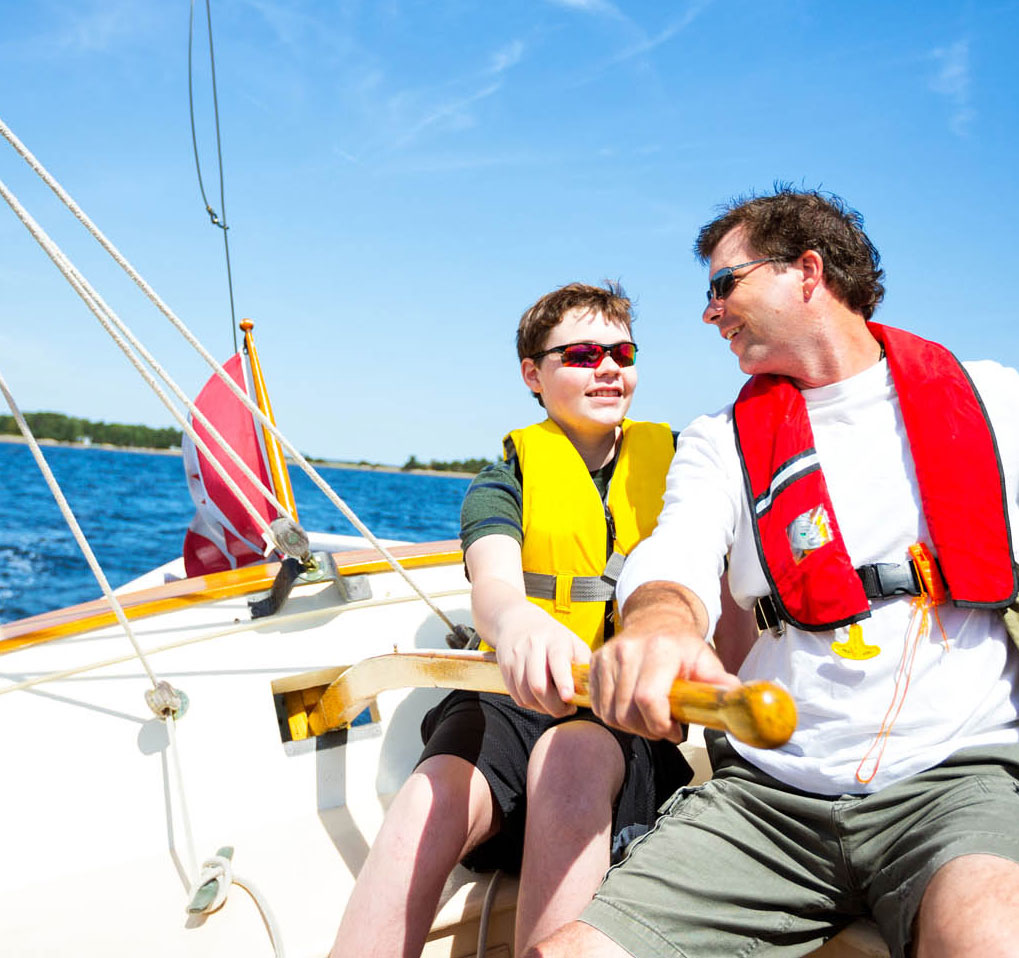
Lifejacket Rules for Powerboats and Sailing Boats
The lifejacket rules that apply to all powerboats and sailing boats, including tenders and off-the-beach sailing boats differ based on vessel size.
For vessels 4.8 m (15.7 ft) or larger:
Everyone must where a level 100 lifejacket or above when crossing coastal bars.
For vessels less than 4.8 m (15.7 ft):
You’ll need a level 50s or above lifejacket on for multiple situations and areas. When on enclosed waters like a lake, you must wear a vest if you are alone or when you have children on the vessel. You must also have a vest on during the night between sunset and sunrise.
In alpine water waters you always need a level 50s or higher lifejacket on. In addition, if in open water or crossing coastal bars you need a level 100 or higher on. For those on a off the beach sailing boat it’s a level 50s or higher vest.
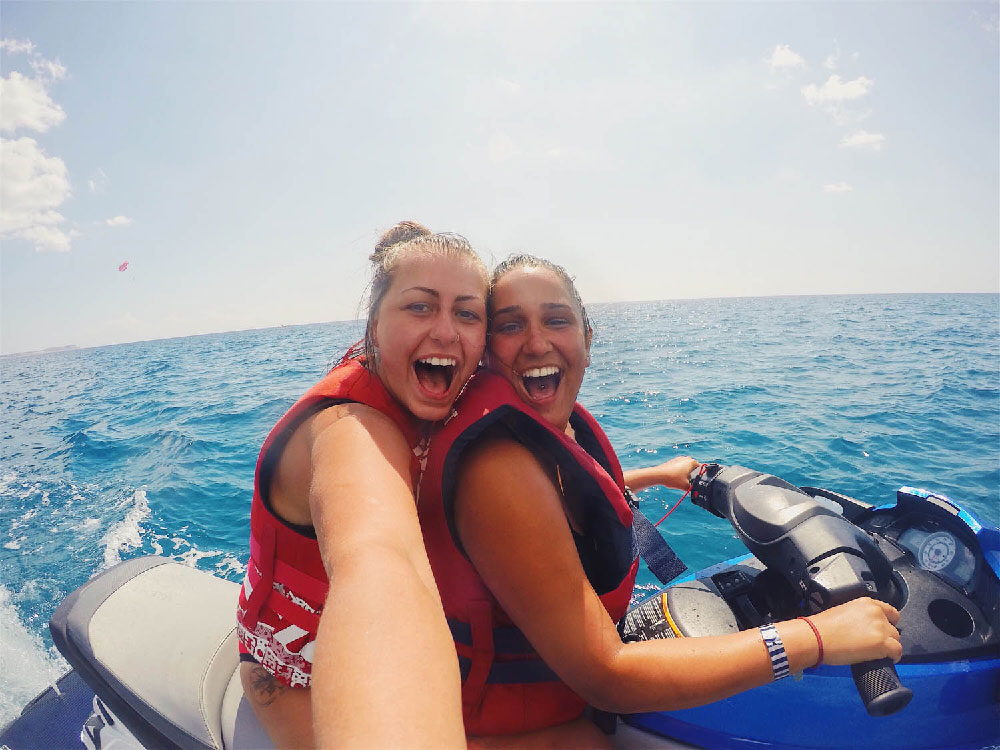
Personal Watercraft (PWC)
Anyone on a personal watercraft must always wear a Level 50S or above lifejacket.
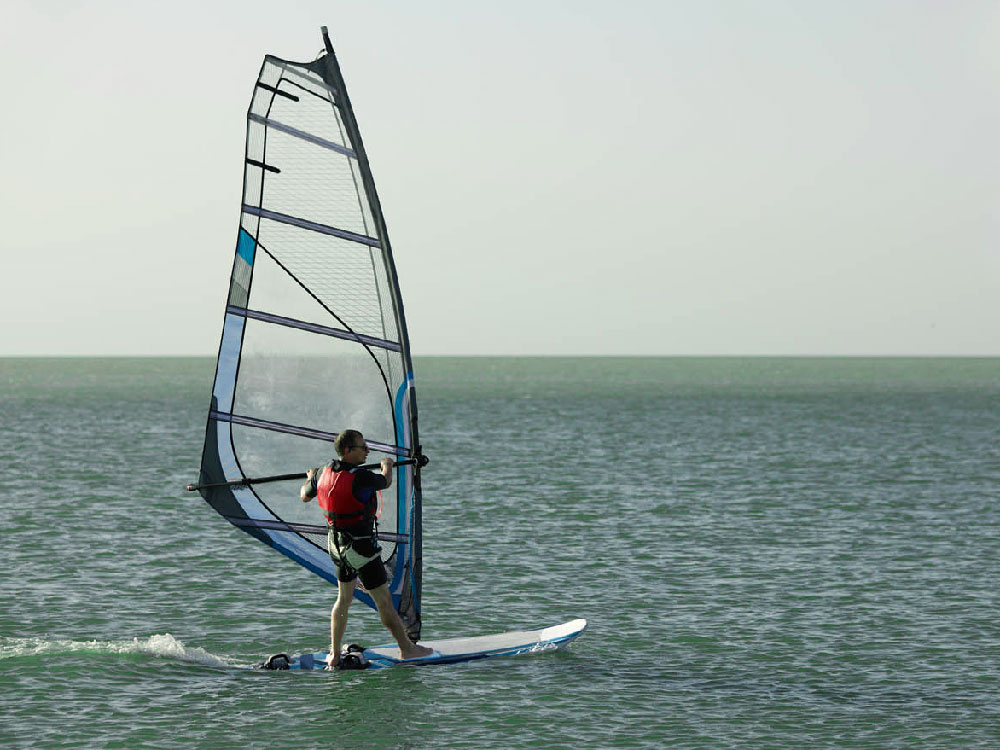
Sailboards and Kiteboards
Individuals on sailboards and kiteboards must wear a level 50s or higher lifejacket when more than 400m from the shore in alpine waters, open waters and crossing coastal bars. For enclosed waters a vest must be worn in the evenings from sunset to sunrise, when alone on the board or when children aged 12 or under are on your board.
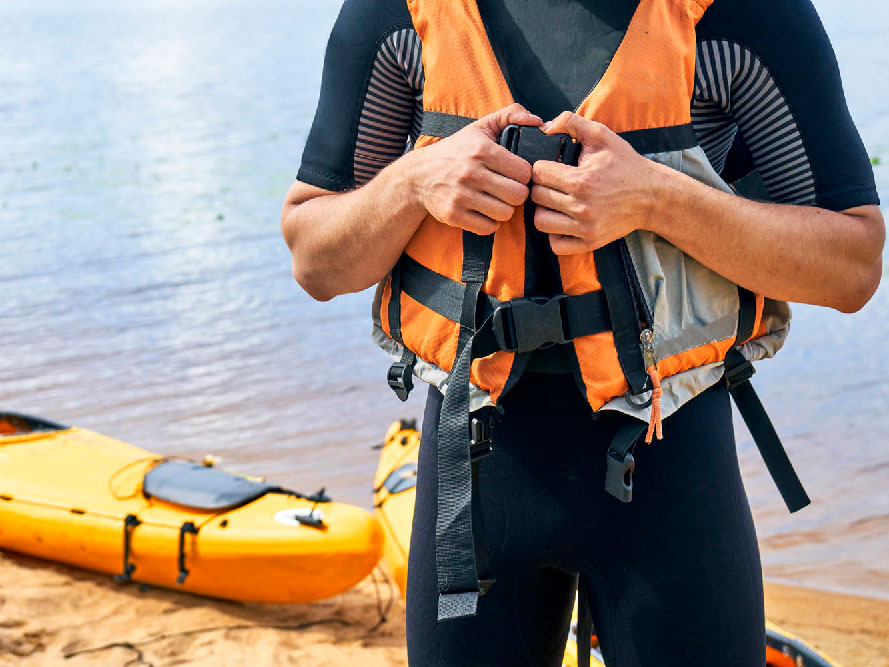
Paddlecraft
For canoes and kayaks, wearing a level 50s lifejacket is always mandatory in alpine waters, open waters and crossing coastal bars. For enclosed waters you must wear a vest in the evening from sunset to sunrise, anytime you are alone or if you have children aged 12 years or younger on your vessel.
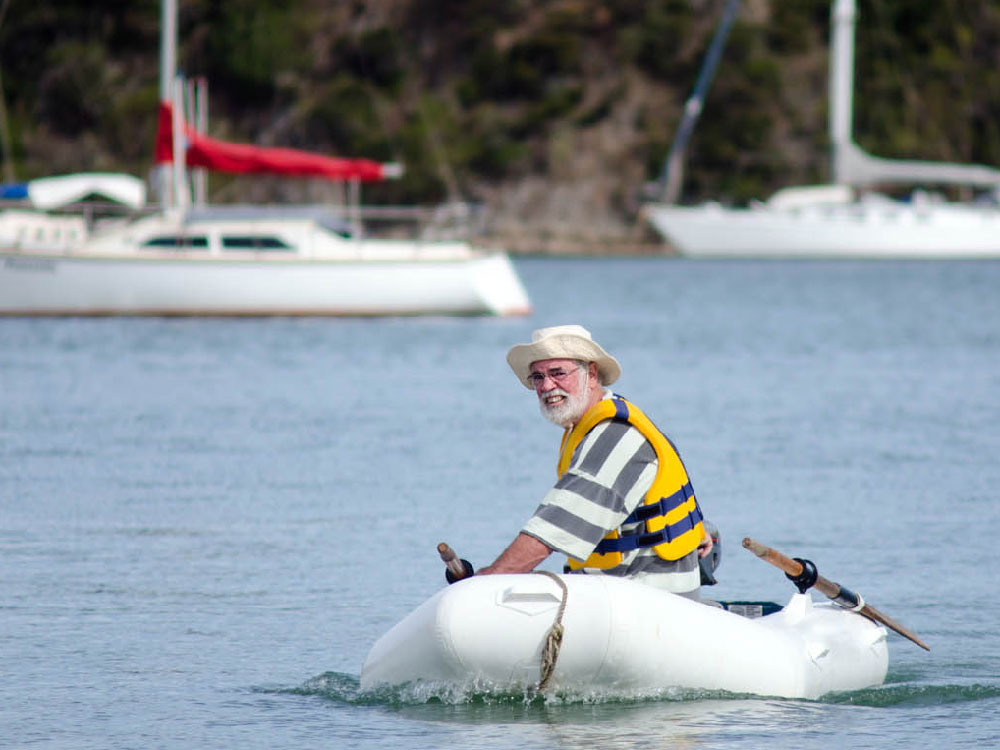
Rowing Vessels
For rowing boats, dinghies, skiffs, or small unpowered inflatable boats, lifejackets should be worn when alone on the vessel or at night in enclosed waters, and at all times in alpine and open waters.
For rowing boats, dinghies, skiffs, or small unpowered inflatable boats, wearing a level 50s lifejacket or higher is always mandatory in alpine waters and a level 100 or higher for open waters and crossing coastal bars. For enclosed waters you must wear a level 50s or higher vest in the evening from sunset to sunrise, anytime you are alone or if you have children aged 12 years or younger on your vessel.
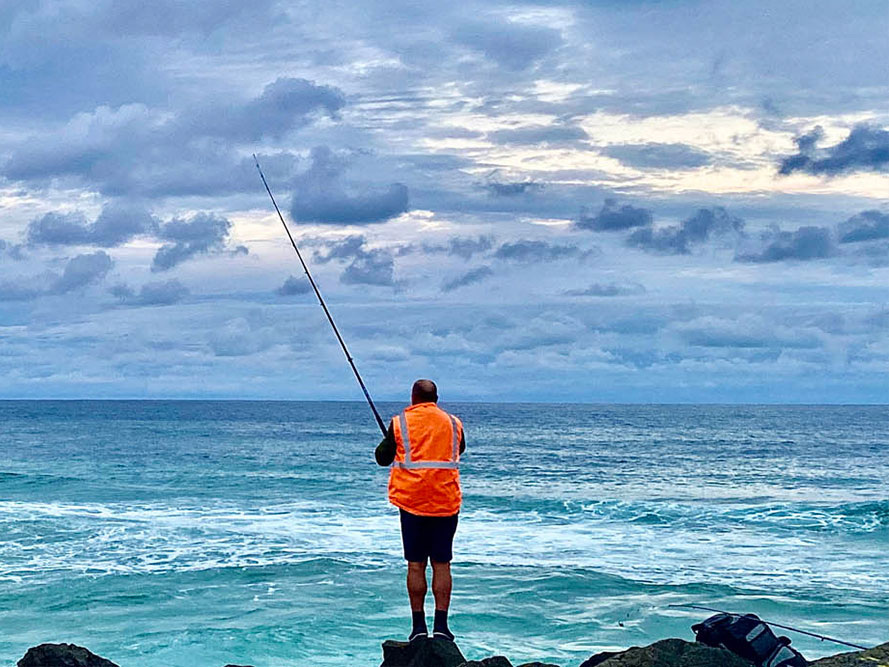
Rock Fishing Lifejackets
Depending on your state or territory, there may be laws for wearing a lifejacket whilst rock fishing. In general, it is recommended that you wear a lifejacket when rock fishing for safety.
In NSW, the Rock Fishing Safety Act 2016 requires adults to wear a level 50s or higher vest whilst engaging in rock fishing activities. It also requires children the age of 12 or under to wear a level 100 or higher vest.
Check your regions requirements before heading out and fishing from the rocks.
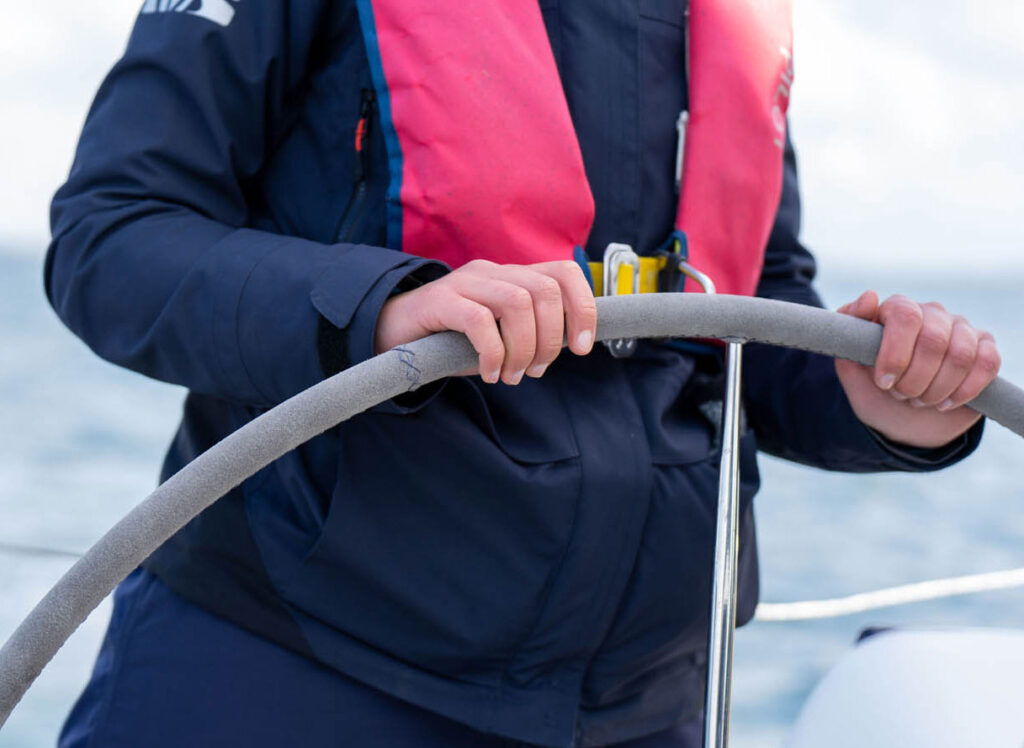
Understanding Lifejacket Levels
- Level 50 lifejackets are primarily intended for use in enclosed waters, making them suitable for those who can swim and are close to the shore or bank, or have immediate help nearby. While they are designed to provide buoyant support in the water, they do not automatically turn the wearer to a face-up position in the event of unconsciousness. These jackets are crafted in high-visibility colours, enhancing visibility in the water, and improving the chances of rescue. Level 50 lifejackets must feature bright colours like red, yellow, or orange over the shoulders for optimum visibility.
- Level 50S lifejackets share the same properties as Level 50 but are available in a wider range of colours and styles, making them popular for water sports such as wakeboarding, wake surfing, tubing, and waterskiing.
- Level 100 and 150 lifejackets provide higher buoyancy and facilitate the transition to a face-up position. Level 100 lifejackets are intended for use when the shore is in sight and not for rough conditions, while Level 150 lifejackets are designed for offshore and rough weather, capable of turning an unconscious wearer to a face-up position.
As marine safety laws vary between states in Australia, always check with local maritime safety authorities for the most accurate and up-to-date information. Below are links to each state’s safety requirements.

